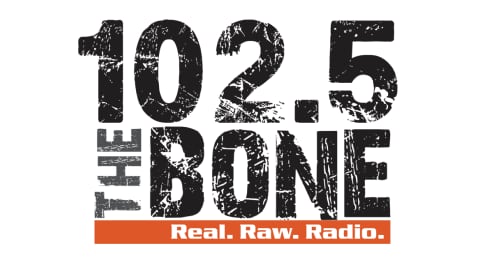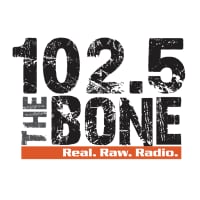How 10 independent brands found their first customers
Making your first sale is a major milestone for a budding entrepreneur. After developing a product, building your brand, and connecting with your audience, all your hard work is validated with that first order. It's the moment when a dream becomes a legitimate, operational business.
But finding your target audience, capturing their attention, and convincing them to take a chance on your brand requires planning. According to data from Shopify, businesses on the platform make their first sale within 35 days of signing up, on average. And while a well-designed website is key, finding effective ways to drive potential customers there in the first place is just as important.
Shopify spoke with successful founders about how they locked down their first customers. Their strategies range from free to paid, local to national, in person to online—so you can find the right ones to leverage for your own business.
1. Crowdfunding campaigns
Crowdfunding can do more than just generate capital for new businesses; it can also connect you with your earliest adopters—people passionate about your idea and eager to purchase your finished product. Will Nitze, founder of the protein bar company IQBAR, used crowdfunding to validate his business idea. "Did people want brain bars? I didn't know, and there was no data on that," Nitze says on "Shopify Masters."
He launched a Kickstarter campaign to find out if there was a market for his idea—and soon had enough preorders to fund his first production run. To get his campaign in front of the right audience, though, he had to get creative.
“The way Kickstarter works is it’s totally momentum-based, so if you have a really good first day, you’re on the homepage of your sector,” says Nitze. “To stay there, you need to keep momentum going.”
To unlock this momentum, Nitze leveraged his college’s alumni database. While many of his emails went unanswered—or were sent to spam—many also led to support, connections, and early sales.
Nitze raised roughly $74,000 on the platform, half of which was from people who discovered the campaign organically. He also collected feedback from these early customers to improve his product, which guided him to focus more on clean ingredients and protein. The company went on to sell 50 million protein bars in 2024 alone.
2. Social media
A strong customer-first marketing plan usually has a social media component—and with good reason. Connecting with people online can be a powerful way to build your customer base and fuel growth. The good news is you don't need a ton of money to get started. When Grace Lee Chen founded Birdy Grey around affordable bridesmaids dresses, she used $10 Instagram ads to cultivate a loyal following.
"We are a social-first brand," Chen says. "Social media has very much been a part of our growth journey, and we've been able to connect so deeply with our social community, whether it's Instagram, TikTok, or even our Facebook brides community."
So what’s the secret sauce? Chen attributes her brand’s visibility to fresh content that both informs and entertains. This includes content around celebrity weddings and bridal tips, as well as fun influencer partnerships that resonate with her demo. During the brand’s early days, Birdy Grey leaned into Instagram polls, Facebook groups, and direct messages to collect feedback and attract new customers.
True-to-you videos can also go a long way when it comes to finding your first customers—and can happen before you officially launch your brand. Jacob Winter, cofounder of home décor brand Mush Studios, discovered this during the pandemic when his rug-tufting videos blew up on TikTok. At the time, Winter wasn’t selling the rugs; he was simply documenting a new hobby, but the unique process caught people’s attention.
"Once I saw that people were actually interested, it obviously got me super excited," Winter says. He began playing with different rug-making aesthetics and continued to post videos of the process, which led to 23 million views within the first year and the launch of the brand.
3. Search engine optimization
Customers often arrive at a business's website after interacting with the brand on other platforms, such as email, social media, or podcast ads. But when you add relevant and highly searched keywords to your website copy—a popular search engine optimization (SEO) tactic—your site can become the first touchpoint for shoppers seeking exactly what you're selling.
When JJ Follano and Sarah Cieslinski founded a sustainable marketplace in 2018, they first named it Earthy Shop. After operating for a few months, Follano discovered through Google search data how many people were looking for zero-waste products, and that the phrase “zero waste store” was searched between 10,000 and 15,000 times a month. Learning that the domain name wasn’t being used was the final push they needed to rebrand their company to Zero Waste Store.
After that little tweak, the eco brand went from a few hundred monthly orders to more than a million dollars in sales during its first year in business. The pair also draws on search volume when deciding which products to add to their catalog.
"If you could really drill down on what keywords you want to target, and then surround your blogs and your content and your pages around those, you really can get a jumpstart in getting organic rankings," Follano says.
4. Trade shows
Trade shows are designed to connect retailers and brands within a specific industry. Business owners typically set up a booth with their elevator pitch at the ready. These events can be competitive, but they can also lead you to your first customers.
Morgan Cros, founder of the umbrella brand Original Duckhead, used trade shows to find her first retailers. "They would see it at trade shows, and it would make them smile. So they knew that it would make their customers smile," Cros says.
Beyond appealing to retailers’ emotions, Cros also appealed to their logical sides, offering low minimum order quantities, great margins, and the promise to buy back any umbrellas that didn’t sell—essentially giving them an offer too good to turn down.
To find success in the trade show circuit, Cros suggests doing a little homework beforehand. “Look at what your competition is doing, what trade shows they’re attending, and if you have the funds and the time to go to the trade shows,” she says. “See the lay of the land, where you would like to be positioned, and start small.”
In 2019, Original Duckhead set up a table at a large trade show in New York. “We didn’t even have a booth, but we also met one of our biggest customers, so just being there makes a huge difference,” Cros says.
5. Paid ads
Paid advertising could put your brand right in front of your target audience, but you’ll want to be strategic about how you do it. Understanding your target demographic, getting clear on your ad goals, and course-correcting as needed are key.
Ryan Bartlett, who cofounded the multimillion-dollar apparel brand True Classic, used paid ads early on to secure some of the brand’s very first customers. The team tested different Facebook ad ideas daily to see what resonated with people, spending no more than $50 each time. Then they funnelled their profits into their top-performing ads to get even greater returns.
"Just really staying honed in on ROAS [return on ad spend] on Facebook was the whole game in the beginning, and even today, it drives a significant amount of our profitability," Bartlett says.
6. In-person events
If you’re at the helm of a product-based business, community events like farmers markets or craft fairs can be a great place to set up shop. Kristen Pumphrey, cofounder of P.F. Candle, found early success at small craft fairs.
"The amazing thing about craft fairs is that you're put in front of thousands of people who are your audience," she says. "When do you ever get that chance? It's amazing."
Pumphrey advises starting small to keep costs manageable; in her early days, she shared a booth with a friend to split the fee. To make the experience worthwhile even on slower sales days, consider what else you can gain. For Pumphrey, this was unfiltered customer feedback she used to refine her product.
For Rocky Xu, founder of Rocky’s Matcha, showing up in person has always been about building community and trust. He first served his matcha at a friend’s flea market in Los Angeles. As the brand grew and he became ready to sell online, he was surprised by the initial lack of orders.
"The most humbling thing, I think, about starting this business was me thinking that we would just turn the website on and sales would just start coming in, and that was not the case," Xu says.
When another friend opened a new café in Los Angeles called Community Goods, Xu came on board as their resident matcha curator. As the café grew in popularity, so did Rocky’s Matcha.
“I think with a lot of their success came our success, because I remember looking into where we were getting our traffic from, and a lot of the searches were ‘Community Goods matcha,’” says Xu. “This is where I think having a community definitely matters and supporting one another definitely matters.”
7. Public relations
When launching a brand-new business in a competitive industry, sometimes a formal communications strategy is the best path. Men's skin care line Jaxon Lane first launched to family and friends, but had a hard time gaining traction afterward. Cofounders Jen Yu and Alex Penfold decided to pivot and partner with a friend who worked in public relations and believed in the brand. "We didn't have the budget to be spending tens of thousands of dollars on Facebook ads," Yu says.
The husband-and-wife team credits their PR strategy with really getting the brand out there. That included gifting products to celebrities, which turned Nick Jonas into a Jaxon Lane fan. But patience was key.
“PR is not a thing where you can turn it on and in three months, you’re in all these magazines,” Yu says. “It really is a long-term commitment, and it has to be for the right product that has the potential for people to want to talk about it in the press.”
Fur cofounders Lillian Tung and Laura Schubert also prioritized PR to help them find their first customers. The beauty brand specializes in pubic hair and skin care—which was a bit of a taboo topic when they launched in 2015.
"PR was a great investment for us at the start because we didn't want to be a joke," says Schubert. "We were introducing products and creating a taboo category, and we knew we had one chance to get it right."
The pair encourages other founders to figure out exactly what they want out of their press strategy, “because you can’t go after all of it,” says Schubert. For Fur, targeting beauty editors was key to legitimizing the brand.
This story was produced by Shopify and reviewed and distributed by Stacker.


